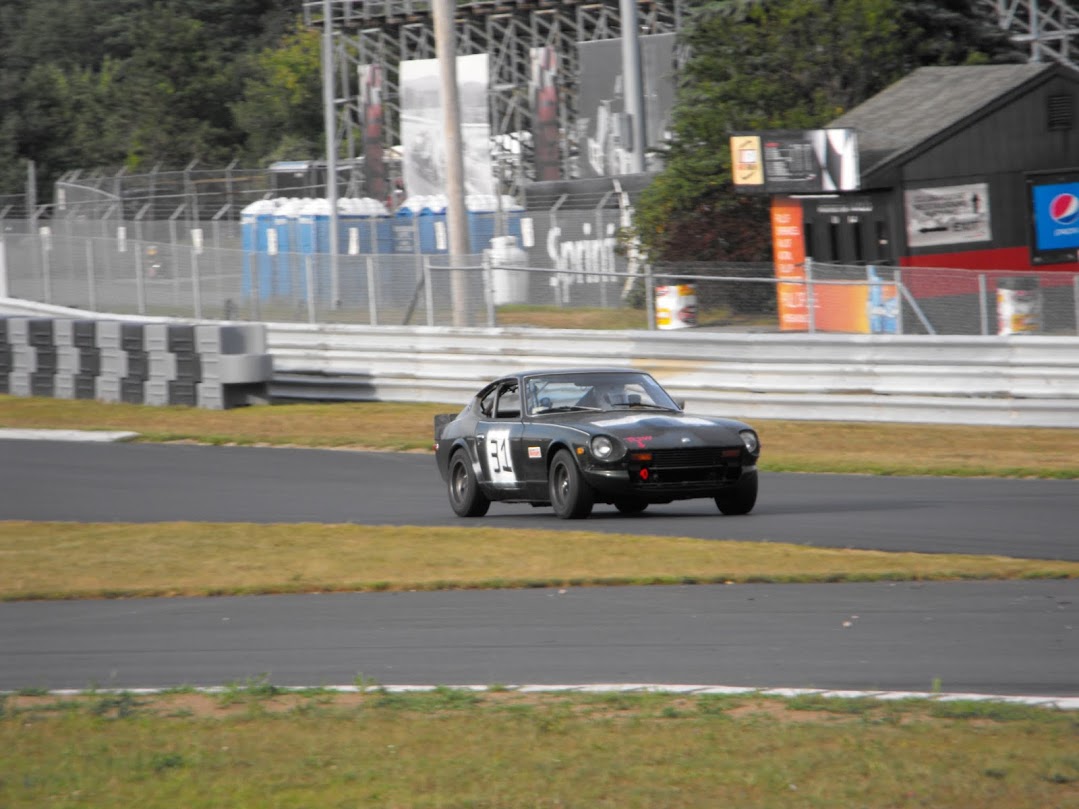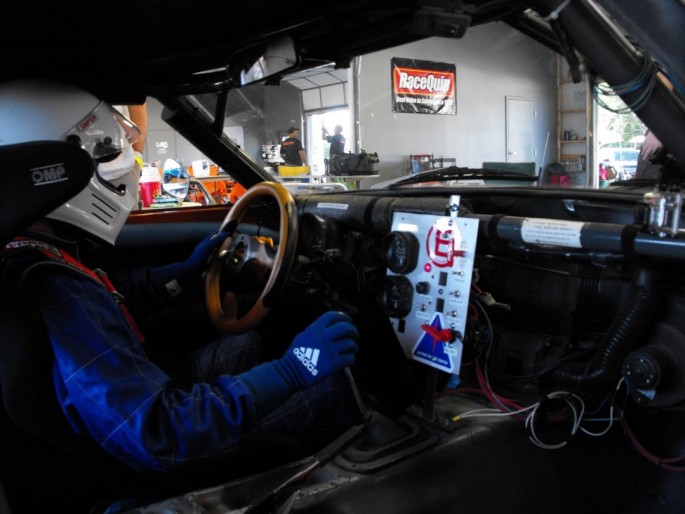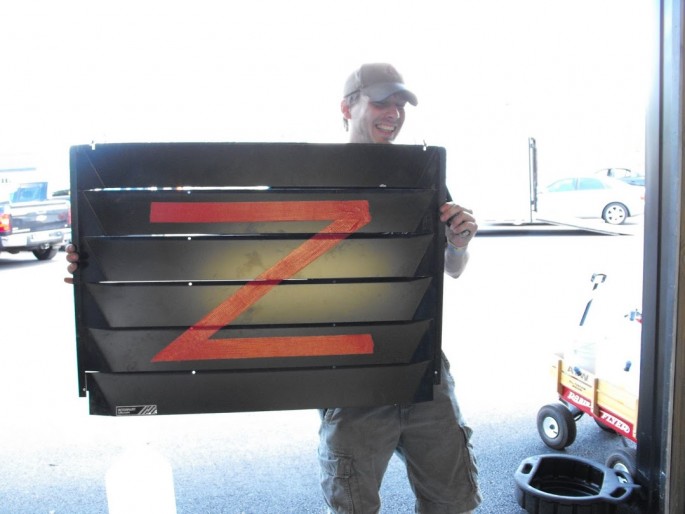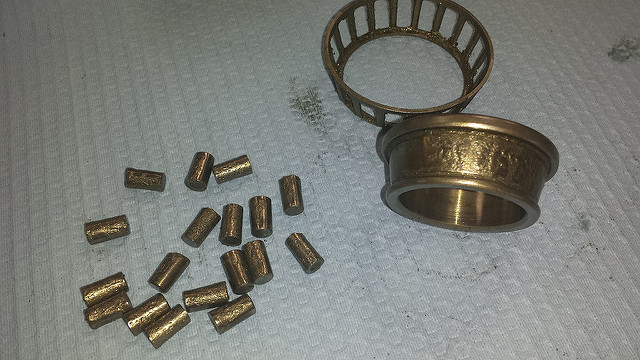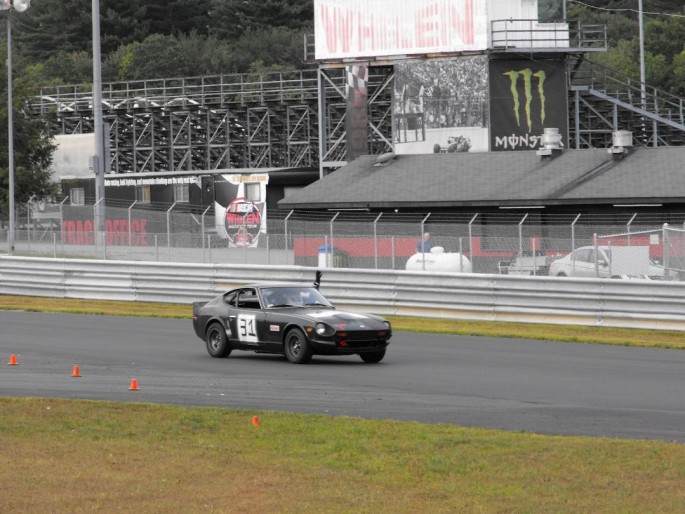(All photos courtesy of the author unless otherwise noted)
Welcome to Bangshift Goes Racing! This is a multi-part series that gives a look into choosing, building, and racing a car on the cheap. Here, you’ll see the misadventures of my friends and I as we go through the process of taking a cheap car and transforming it into a race car with the eventual goal of racing in the “Trifecta of Crap”, which consists of the now-defunct BABE Rally, the 24 Hours of Lemons, and the Grassroots Motorsports $20xx Challenge. This second installment will cover converting our 1976 Datsun 280Z from street duty into a working race car.
We left off in our last installment with a running, driving car that was transformed from street duty into a car that was ready to hit the track. With the date circled on the calendar, we signed up for the “There Goes The Neighborhood!” Lemons race at Thompson Motor Speedway in Thompson, CT. Again, none of our team members had ever raced at a Lemons event, and our best driver Dave had only driven on a live road course a couple times. The last time he drove on one was in his BMW E30 M3 about 10 years before the event, so one could say that we were all a little worried that we would screw something up on track.
With all the repairs and modifications we needed to make to the car, we were also a bit nervous that we wouldn’t pass the tech inspection. But when we rolled through the tech line, we actually passed without any issues!
For those unfamiliar with how Lemons works, the event is spread over three days. The first day is when the tech inspection happens, as well as an optional test and tune on the track. The next day, cars will line up on the grid in the morning and race all day until the evening. And on the last day, cars will race again for most of the day, ending a little early for the awards ceremony after the event. There are three racing classes: A, B, and C. Class A is for all the really fast stuff. This is where the “cheaty” cars are, and where the big boys play. Class B is basically where the glut of the pack lies. And lastly, Class C is where the slowest, weirdest crap that has no business being on any race track ever is. The judges get to classify the cars on the spot, and they are pretty good at knowing what is what. They also will assign “BS laps” for anything they deem too “cheaty”, for cars that are blatantly out of budget with modifications. The rules here can be pretty funny and have all sorts of loopholes, like the one that states that aircraft engines will be granted an exemption, which has people squeezing radial prop engines into MR2’s! But where did our newly modified Z stand? The judge looked over the car, deemed it a little”cheaty”, and slapped a Class A tag on it with some BS laps. That is, until we bribed the judges.

All teams that use a bribe get their cars branded, and wear that paint like a badge of honor, or, umm, dishonor. But either way, they wear it!
Greg’s wife is really good at glass etching, so she whipped up a set of 24 Hours of Lemons pint glasses for our bribe. The judges didn’t smash them onto the ground in disgust, and rather liked them, so we got our no BS laps removed! I know what a lot of you are thinking, “That’s not fair!” you may say. But bribing is a big part of the humorous parody of the racing world that is Lemons. Everyone does it, and if you aren’t doing it, you’re missing the point. It’s all about getting some real track time in a real race with other real drivers, and having fun doing it. The judge also told us our race numbers were too crappy to read at speed and made us re-paint them on to keep in his good graces. Numbers are hard, folks. Knowing where we stood class-wise, we opted to skip the test and tune and prep the car for the next day.
The next morning, with the car as ready as it ever would be, we started to get down to business. Our team consisted of 5 drivers: Greg, Dave, Jeff, Matt, and Pat, and I was basically the support and logistics crew.
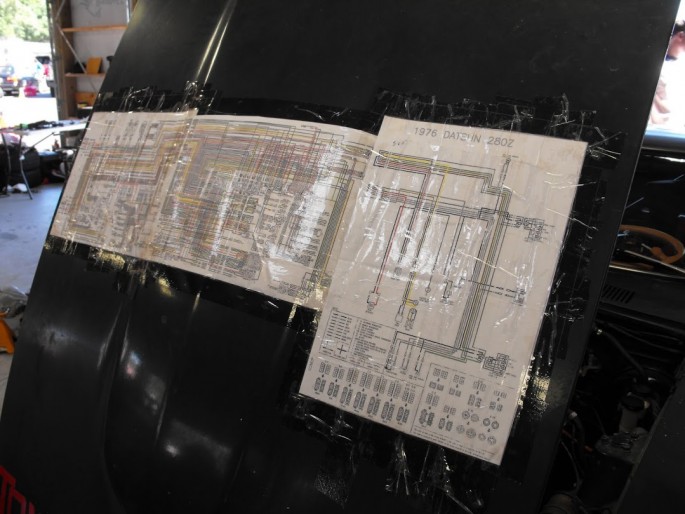
One of the things we did was plaster the entire 1976 Datsun 280Z wiring diagram to the hood of the car. Since it was an old car with questionable wiring, we figured this was a good idea in case we had to chase down a problem. Luckily, we didn’t have any electrical issues. Also, every wire for the fuel injection system is white on this car. No, we didn’t do that, it came that way. And yes, ALL OF THEM.
Our fastest driver by default was Dave, as he is a complete machine behind the wheel and can make any car (or truck, for that matter) do all sorts of things it’s not supposed to. Since he was the only one of the team with actual on-track experience, he went first to get a feel for the car and the track so he could communicate with the rest of us. Speaking of communicating, we had installed a radio system with two walkie talkies so we could communicate with the driver. This is essential, as you’ll need to communicate for various reasons between the driver and crew throughout the race to warn of track conditions, car behavior, or what the driver in the car wants for lunch when he’s off shift. Just make sure you both know what channel you are supposed to be on, so you aren’t yelling into the thing to other random people on your channel (this may or may not have happened). Also make sure the thing is secured! Ours was dislodged during a driver change, which caused the “seek” button to get smacked and our driver had to endure over an hour of the thing skipping around channels listening to who knows what! That was a fun conversation to have with the driver when he was ready to kill us after his shift was over. Also, if you are sharing channels with other teams, they may ask you to pick up lunch for them when you are asking your driver what they want when ordering. Yes, that actually happened.
Here’s a pro-tip: if the track has a garage, opt for renting a space inside of it instead of being stuck working in the dirt or gravel. Garages have air lines, power outlets, work benches, and it’s a lot better working in there in case it’s really hot, really cold, or pouring rain. It’s a little more cash, but it’s worth it!
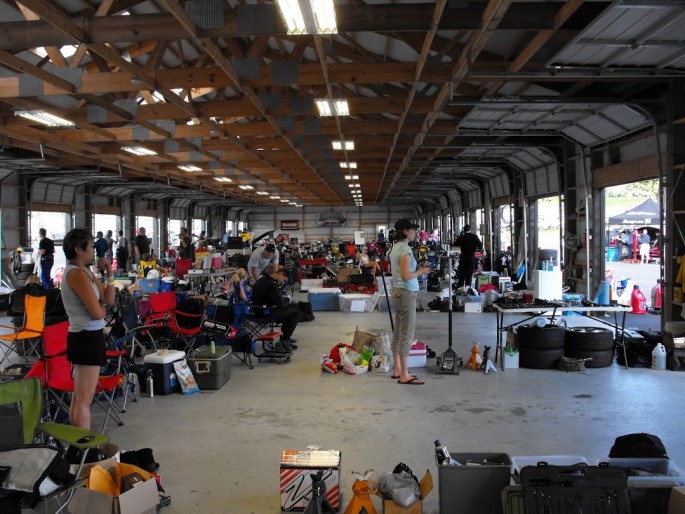
It also doubles as a cool place to hang out while your off shift, as well as a party zone after the racing’s done for the day.
When we sent Dave out on the first shift, he was eerily quiet on the radio for a while. We eventually got him to tell us how the car felt. To his (and our) surprise, it wasn’t half bad! The biggest surprise was braking. Remember, this car was from the mid-70’s, so it came with solid front rotors and rear drums. Somehow, they worked pretty well for most of the race, with good bite and little fade. Then, we realized halfway through his shift that we needed a way to let him now when we were ready to have him pit in, and where we were in the pit. A lot of guys were using those big, flat drain pans or cardboard, but we had neither. What we DID have was a set of rear window louvers for a 1976 Datsun 280Z! We were going to use them on the car, and at one point, I wanted to name the team “I Louver You Racing” and put WAY more louvers all over the car, but it never happened. We got some red duct tape, made a big Z on it, and viola: instant, stylish pit sign. While we could radio to the driver when to pit, they had no idea where we would be, so this awesome sign fixed that.
With that done, we fueled up our fuel jugs and dragged them over to the pit. We also chose this time to swap drivers. Greg was up next.

The vehicle of choice for fuel jugs is apparently a Radio Flyer wagon with the stake sides. Everybody had them, and for good reason. The high sides keep the jugs from tipping, and the pneumatic tires let it roll over uneven pavement easily. I had my badass Radio Flyer ATW loaded up with hi-test and ready to rock.

Here’s the way the pits work: anyone can be on the inside wall, including spectators. Once you cross that wall, you need to be in your suit and helmet at all times. Things can go wrong, and the organizers want you to be safe.
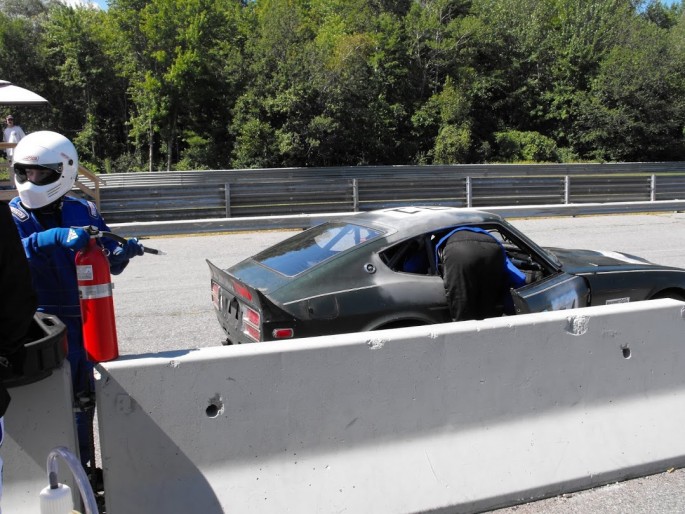
While fueling up, someone needs to be at the ready with a fire extinguisher. Trust me, if something happens, it can go south really, really quick. Be prepared.
After pitting in, with Greg on the track, we got some more detailed feedback about the car and the track from Dave. He would then coach Greg over the radio, as well as the other drivers, as to what the car was doing and where to do what on the track. On some of the corners, the Z would feel a little loose and have a tendency to want to spin, so stuff like that is valuable info to share with everyone else.

I believe this was one of those corners. If for some reason it was approached on the outside, The car got real loose. I saw a lot of cars hit the dirt there all day. (Photo courtesy of 24 Hours of Lemons)

This was another tricky turn. This S-shaped area went under a bridge and right into another left after the overpass. Cars were fighting back and forth here all weekend.

After all that hard work we put into building the car for racing, it was nice to see it kicking butt out there. And dare I say it looked great while doing it! (Photo courtesy of 24 Hours of Lemons)
For the first few hours of the race, everything was going better than expected. Our guys were turning laps, and the car felt good. Well, all was good until an errant Mustang tried to pull a Dale Earnhardt Sr. and make an infamous “pass in the grass” and tagged our Z on the driver’s front fender and door.
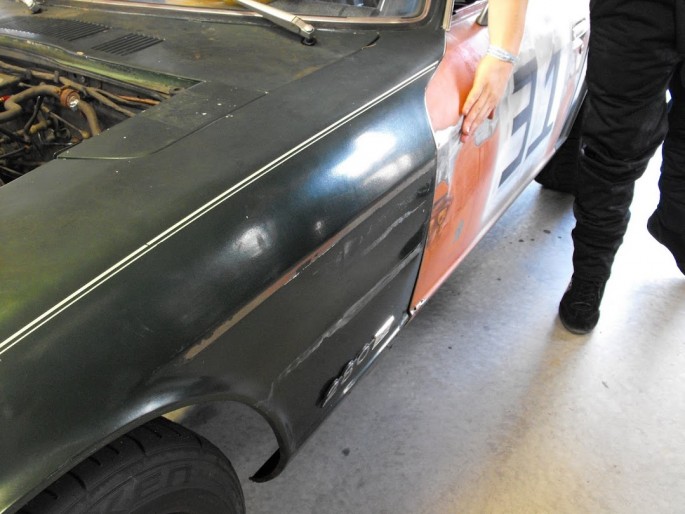
This FEELS damaged. And we couldn’t fix it with our eyes. But hey, it’s a Lemons car and this stuff happens. It didn’t change the driving mechanics, so not a big deal.
Aside from the minor fender bender, the first day of racing went pretty well, and we were satisfied with a mid-pack finish in the first day standings. Our biggest fault was the amount of time it took for fueling and driver changes. Our longest pit-in (driver change and refuel) was 10:23. That’s TEN MINUTES and twenty three seconds. We had to get better at that, because it was killing us. The shocking part is that the Z was a willing partner for this type of insanity. Not a peep, creak, or fuss came out of the car, and the L28 inline six was as smooth as ever. We had heard horror stories of these engines failing miserably in Lemons events, but ours was a sweetheart all day. While other cars were exploding (seriously, a PT Cruiser grenaded something violently right behind us!) and losing parts all around the track, The Z soldiered on.
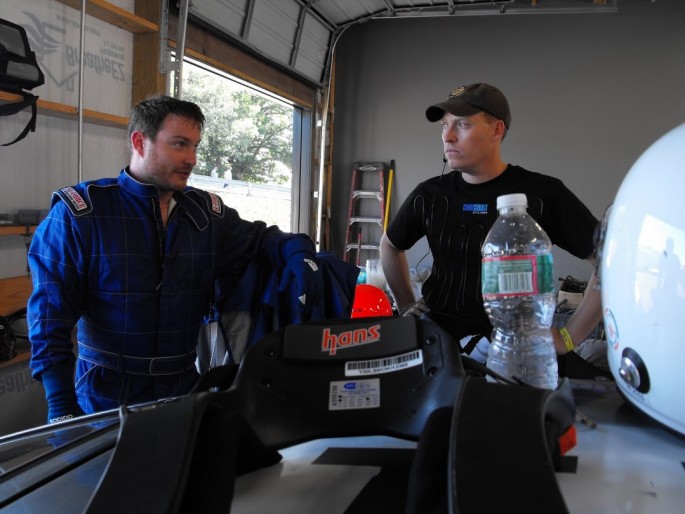
Another Pro Tip: It can get really, really hot in the car, so most of our drivers opted to get Cool Shirts to attempt to keep the temps down. It’s basically a T-shirt with cooling lines snaked trough it, and it hooks up to a cooler filled with ice water that has a circulating pump. It worked pretty well. (serious racing faces courtesy of David Seavey, left, and Jeff Hutton, right)
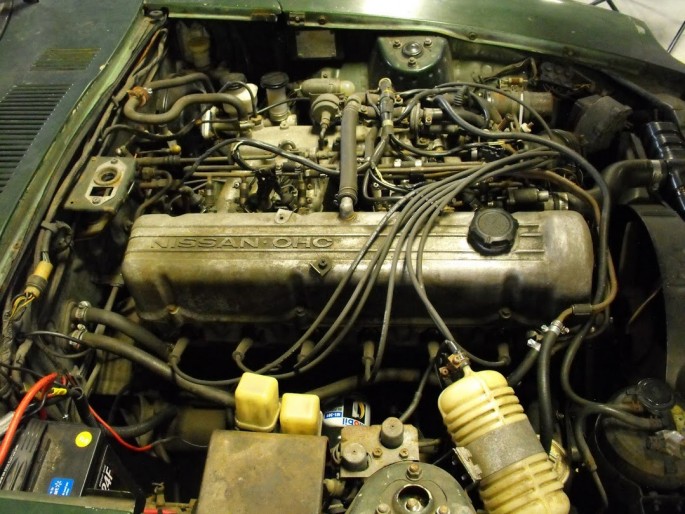
And there’s our L28. Nothing was seeping out, and it looked exactly the same as it did in the beginning of the day. And no extra ventilation holes in the side of the block! Inline sixes are awesome.
The next day, we got right back to business and worked on reducing our terrible pit-in times. While that got better, one small issue reared it’s ugly head midway throughout the day.
While our guy Dave was out there murdering apexes, he started to hear and feel something strange going on up front. That turned out to be this:
Both of our front wheel bearings were cooked after putting up with not only 30+ years of driving, and a day and a half at a road course did them in. We tried tightening the bearings down and sent it out for another hour, but that didn’t fix the problem. Luckily, we had a spare set on hand, and we swapped them out and got back out there. One of the issues we had was that one side’s dust cap had disappeared, so we filled the thing with a ton of grease and grabbed a spare wheel that still had a center cap and tossed it on. That worked enough to not sling hot grease all over the place, and we were able to finish out the race under its own power.
Over the course of the two days of racing, we ended up finishing mid-pack: 48th overall and 31st in Class A. 88 cars out of 100 or so cars that attempted to compete were actively racing with us at various times throughout the event, so finishing 48th was pretty good by our standards. We did kick ourselves hard for not tightening up those pit-in times, and we could have done a ton better if we cut them down to even 6-7 minutes per pit stop. But that was something we could work on for the next event. Did we care what place we came in? Not really. Did we have fun and make a ton of new racing buddies? HELL YES!
With our first event in the books and the car on the trailer in one piece, our sights were set on the next event, which would take place at the New Hampshire Motor Speedway in Loudon, NH. For those that are not familiar with that track, it’s a big time, major venue that even hosts the NASCAR Sprint Cup. Would we learn from our lessons and tighten up loose ends, or would we crash and burn on the big stage? Stay tuned for our next installment!
Again, you can follow along on our misadventures over at the Nuthin’ But A Z Thang Facebook Page! And don’t forget to check out the insanity over at the Lemons Racer Lounge!







